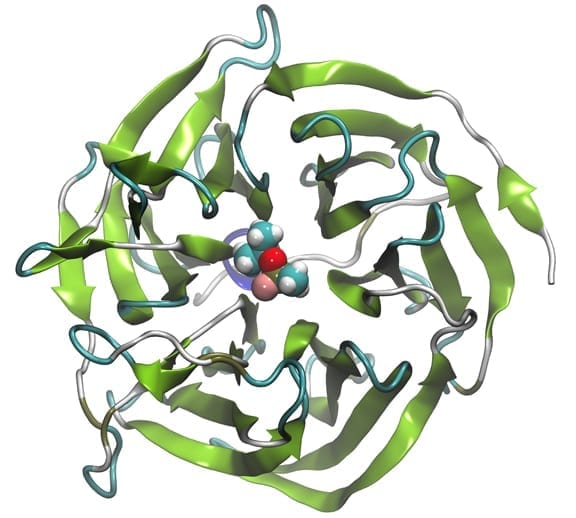Researchers at the University of Tennessee at Knoxville (UT) are a step closer to creating a prophylactic drug that would neutralize the deadly effects of the chemical weapons and nerve toxins.
Through a joint effort between scientists at UT, Oak Ridge National Laboratory (ORNL), and a French national laboratory in Grenoble, the research focuses on engineering enzymes—called bioscavengers—that catalyze the hydrolysis of nerve agents as a prophylactic approach to diminishing their toxic effects.
“Enzymes exist that can potentially chew up nerve agents and render them useless before they’ve had time to act, but they need to be improved to work faster,” said Jeremy Smith, UT-ORNL Governor’s Chair and an expert in computational biology.
The researchers are using neutron scattering and computational sciences to study these nerve agent bioscavengers. Neutron scattering allows the scientists to get a detailed three-dimensional view of the enzymes. Computer simulation then uses this view to understand how the enzymes break down the nerve agents.
“The simulations produced an unexpected result,” Smith said. “The enzymes break down sarin in an unusual way. Now we can use that result to engineer them rationally.”
The team is seeking funding for research into how the enzyme—a protein that doesn’t exist in the human body but is made in nature by squid—can be modified so it is more efficient in degrading specific nerve agents. There is much work to be done, including introducing key changes, or mutations, that would improve the activity of the enzyme.
“Using an enzyme from a squid as a bioscavenger in humans is problematic because the human body will recognize it as a foreign substance and chop it up,” said research team member Jerry Parks, a research staff scientist in ORNL’s Biosciences Division. “Other groups have already shown possible ways to get around that problem. Also, there happens to be a similar enzyme in humans that is currently being developed by other groups. Information from our study may benefit them too.”
Ultimately, the researchers will have to figure out the best way to administer the enzyme to humans. It probably would be an injection, but it could be an aerosol spray or a patch. Still, the work holds promise to help make the world a safer place.
“We hope that prophylactically administering efficient bioscavengers will make the use of nerve agents much less attractive to belligerents,” Smith said.
Their study was published recently in the Journal of Physical Chemistry: Hydrolysis of DFP and the Nerve Agent (S)-Sarin by DFPase Proceeds along Two Different Reaction Pathways: Implications for Engineering Bioscavengers.
Source: University of Tennessee at Knoxville, adapted.



